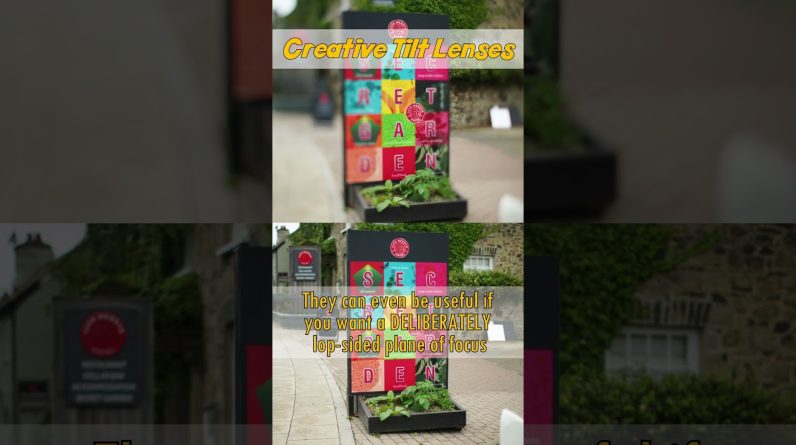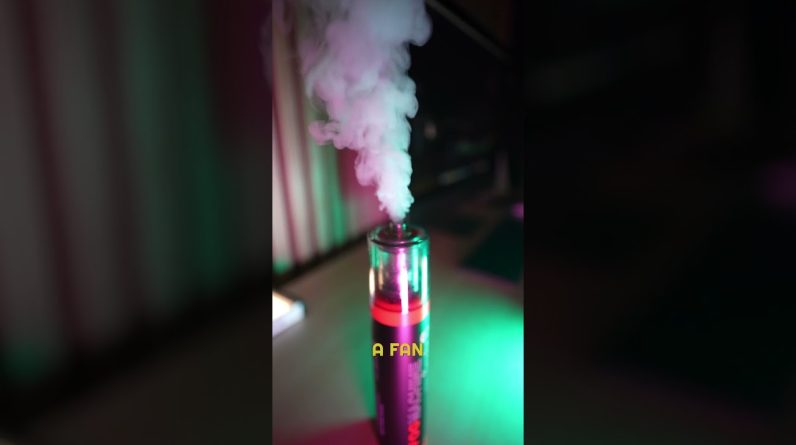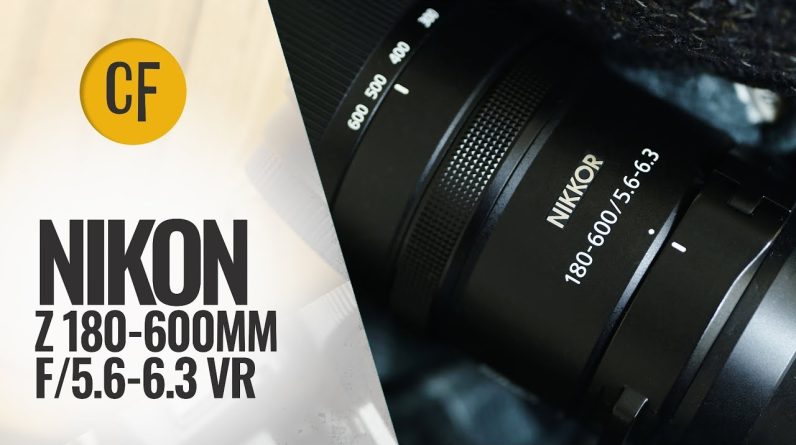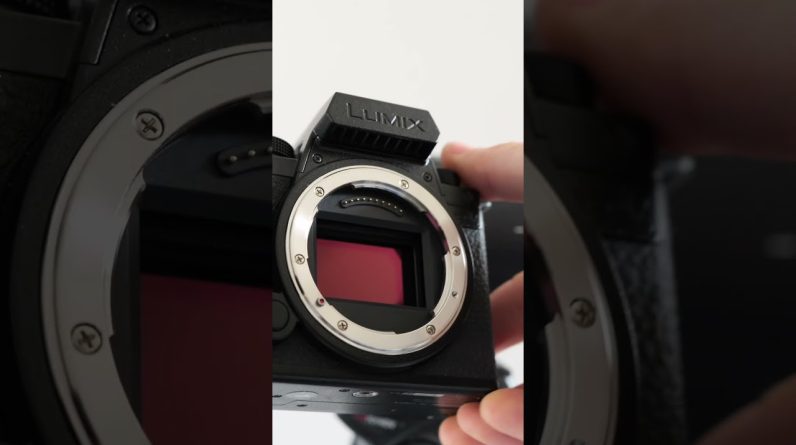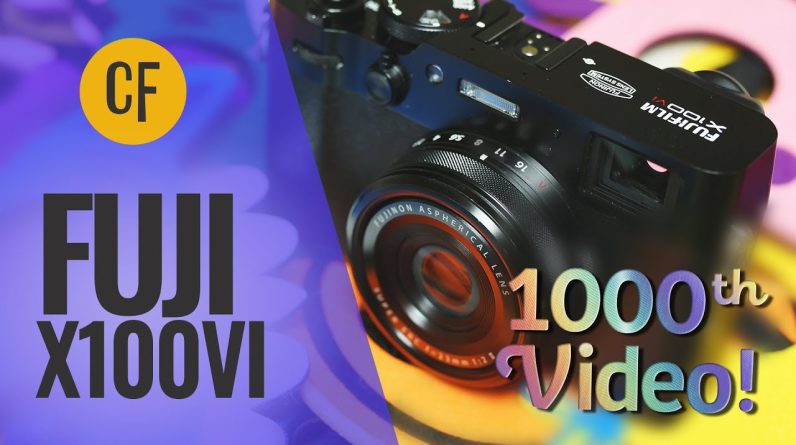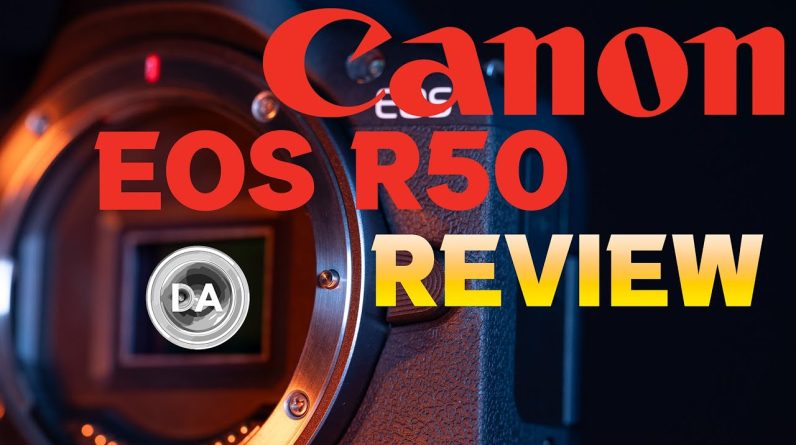Foreign Hi I'm Dustin Abbott the samyang vaf Series our new hybrid lenses that Recognize that many modern cameras and Photographers split time between photos And video so these lenses combine Popular cine features with typical Photography features like autofocus and The results are a lot of fun you can Find my review of the whole series and How the lenses work together by watching This video today however we will be Doing the first individual review of the Series and taking a look at the samyang Or Rokinon vaf 24 millimeter T 1.9 right After a word from our sponsor are you Ready to use that gear and show off your Skills viltrox is sponsoring a global Photo contest with more than fifteen Thousand dollars worth of prizes with One catch photos must be shot with a Viltrox lens a panelist of Judges from Around the world including my friend Christopher Frost will select the Winners the contest runs from April 10th To June 10th and you can upload your Submissions to the link in the Description below if first prize comes With over four thousand dollars worth of Gear including a Fujifilm xt5 and a Viltrox AF 13 millimeter F 1.4 lens with Subsequent prizes loaded with lenses Tripods lights swag and gift cards there Is no cost to enter so get snapping
Upload your best work and win big prizes In the viltrox global photo contest so You may have noticed that as compared to The tiny series 24 millimeter F 1.8 Which a lot of the same DNA from this Lens is in this new VA F lens may have Noted that the photography lens is Designated by its aperture F 1.8 whereas The cine lenses are designated by their T-stop or their light transmission stop So if F 1.8 which is the same here it's The same maximum aperture but as always As light passes through the aperture and Then through the glass elements that Make up the optical design a little bit Of that light transmission is lost and So in this case it goes from the Aperture size of f 1.8 to the Transmission rating of 1.9 which is Actually quite efficient it means that There hasn't been a lot of loss of light In the glass element itself Now as you can see all of these lenses Are completely standardized in that it Doesn't matter whether you're looking at The 24 millimeter the 35 millimeter the 75 millimeter or the upcoming 45 Millimeter and then 20 millimeter T 1.9 Lenses they all are going to be Identical in size which is 72.2 Millimeters in diameter with a 58 Millimeter filter size also 2.8 inches In length so almost identical in length And diameter and they weigh in at 280
Grams or 9.6 ounces now while it's true That these lenses are a little bit Larger than the tiny series lenses that They replace also a little bit heavier They still in an absolute sense are very Compact and very lightweight and the Build quality has dramatically improved Here that is up to it including a metal Accessory ring on the front that has Actually has electronic con contacts in The bayonet style Mount that is there at The front and that is for custom Accessories that will come exclusively For the vaf series so far only one thing Has been released one accessory and that Is this manual focus accessory I break Down that a little bit more in the Overall series review that I referenced Earlier so this manual focus adapter Gives you two things that the stock lens Does not have the first of those is hard Stops hard stops both at infinity and Then also at minimum Focus distance Something you just can't achieve in a Focus by wire manual focus ring the Other thing that it gives you is a Consistent distance scale and distance Markings which helps you of course with Focus pulls to have very repeatable Results now I will note that in the Actual manual focus ring itself it has 300 degrees of rotation it also is Linear and so that means it's not speed Specific and so you can do a fast pull
You can do a slow pull and you're going To end up at the same point however Without any kind of markings to kind of Pull back to whereas the manual focus Adapter does give you that so it Certainly adds a little bit of value There return to the actual design of the Lenses itself however there's a few Other features here that are significant First of all there is a tally lamp both At the left hand side and then at the Front of the lens that allows you to Monitor recording status either from the Side or the front which I have found Very very handy and because I have these Lenses displayed I've been using them a Lot to record these segments and not Being able to see that tala lamp I'm Missing it already because it's just That constant confirmation you can know That video recording is taking place There is a custom switch basically the Custom switch changes the behavior of The ring and so I've got it set up that In the first custom mode it is the ring Works as an aperture ring and then if You go into the second mode it Automatically goes into manual focus Mode and obviously the ring is going to Function as a manual focus and so it Kind of gives me the equivalent of Having an AF MF switch the same thing is Designed the manual aperture control to Where it behaves differently whether you
Are in photo as you can see here with a Little bit more in terms of some visible Stepping and then if I switch the camera Into video mode We can see that the aperture control is Smoother and with less visible stepping As a part of the design also note that It's not as good as a dedicated cine Lens when it comes to actual aperture Racking which refers to closing down or Opening up the aperture during a video Shot and so that more the depth of field Either increases or decreases to making More or less in Focus you can see that It's not perfectly smooth in that Process due to that little bit of lag in The focus by wire nature but overall This actually handles really really well For a lens of this type it also has the Focus hold button that can be programmed To different functionalities now I will Note that a lot of the custom nature of These lenses it can be customized if you Use the samyang Lin station and then Their free lens manager software right Now the lens station can be had for About 40 US dollars I highly recommend Getting it it allows you to do firmware Updates and also of course to tweak the Behavior of the lenses itself Included in this design constant across All of them is that there are six Weather sealing points which make this a Fairly thoroughly weather sealed lens
Obviously very handy for shooting in Various inclement conditions as we've Already seen the aperture Iris has nine Rounded aperture blades and the focus is Powered by linear Focus motor Now in the case of the 24 millimeter the Minimum Focus distance is 19 centimeters Which gives you a maximum magnification A quite High magnification of 0.21 times Certainly very useful and there is it's Not a completely flat plane of focus Because you're focusing fairly close With a wide angle lens but certainly Very useful for different kinds of Application Also of the series at least what's been Reported at this point the 24 millimeter Shows the least amount of focus Breathing at less than a percent 0.7 Percent so that means that it is there Is almost no Focus breathing as you can See here and that's going to be Obviously very very useful for video Acquisition so talking about video here For a moment first of all the actual Focus pulls are really really smooth With this lens if you have ever done Manual focus pools with a typical Autofocus lens it's off often not all That fun autofocus the actual Focus Rings tend to not be all that well Damped and you know maybe they move too Quickly for doing smooth Focus pulls I Really like this as long as I'm not
Trying to rack from minimum to Infinity Obviously 300 degrees of rotation that Is several full Breaking of the wrist Type rotations if you're just doing it By hand but for a more typical distance Say within a frame of nine meters around 10 feet it's really it's quite perfect And so it allows you to have really Precise control over that and I find That whether I'm doing a fast or a slow Pull that it really really works very Very nicely Also when you're doing autofocus pools Autofocus pools are not too aggressive In that it's not like jumping back and Forth but rather it is tuned nicely to Where you still have a rather cinematic Feel of pulling from one point to Another as you can see here obviously These lenses work really really well on Gimbals for a couple of reasons they're Lightweight and so that always helps but The other thing that really helps is not Only are they all constant in their size They're also constant in their balance Point which is quite a clever little Engineering feat what it means is that You can hot swap these lenses and never Have to worry about rebalancing on a Gimbal and so I found that you know Doing actual gimbal work that it Functions smoothly autofocus worked well In that situation and of course many Times you'll you'll want to shoot a
Manual focus as well depending on what You're trying to accomplish and it works Just everything just works really really Well now samyang also touts these as Working well on a larger drone I don't Have anything of that size to mount them On but again some of the same principles Would be true in that when it comes to The balance and the overall lightweight Only 280 grams of these lenses so let's Talk about the Optics of the 24 Millimeter 2.1 our T 1.9 today one of The first things that's really important About this lens and then all of the Lenses in this series is that they all Are designed to have consistent color And all subscribe to samyang's CCI index And so that there is a constant color Output which really allows you to mix And match footage very very nicely it's Important as a series but I also just Found that in general colors were really Really nice out of this lens very Neutral but with a nice feel to them I Also noted that there was a good kind of Cinematic look to when you know light is Hitting the the lens I call it lens Flare or even flare resistance but it's Not completely resistant but what it Does show is something that is quite Cinematic and fuel also if you have the Lens stop down the Sunburst effect is Quite nice as well now you will note From this Focus pool returning this for
A moment you can see a bit of chromatic Aberration as you go back and forth the Primary aberrations you're going to see Are some green fringing in bokeh Highlights it's nothing that's ruinous But at the same time just note that There is going to be a bit of it there Now with a wide angle lens you know Bokeh is maybe of a secondary Consideration and that you're rarely Going to have things completely Defocused in the background but I will Note that the bokeh quality for a 24 Millimeter lens is fairly good here not As good maybe as what you might get with An F 1.4 lens or a cine equivalent to That but quite good for a lens with a Maximum aperture of f 1.8 Now we're going to dive in briefly to a Little segment where I'll give you a Look at the sharpness the contrast the Distortion things like that that are a Little easily more easily measured by Looking at a test chart and in still Form so let's dive in and let's take a Look at that so we'll start by taking a Look at vignette and Distortion now for A wide angle lens the amount of Distortion is not particularly high it's Also not a hundred percent linear However you can see after my manual Correction there is just the mildest Amount of a wave or mustache type Pattern there I used only a plus three
To correct for the Distortion and then a Plus 65 so about two and a quarter stops Of vignette in the corner neither is Really particularly severe and so Obviously not all that hard to correct Now I do my test of full frame lenses on Sony on the Sony Alpha One which is a 50 Megapixel body I'm showing you these Results at 200 magnification to Highlight strengths and weaknesses very Clearly so at 200 magnification we can See in the center of the frame this is a Very sharp lens it's delivering very Good contrast very high amount of detail The mid frame is also quite good not as Good as the center but a fairly mild Drop and then if we look down towards The corner there is more of a drop in The corner though you can see that even On the left side of my final bill down Here in the corner things are still Looking pretty good and then there's Kind of a steady progression to where It's dropping off towards the extreme Corner so through a lot of the frame up To including this Zone here sharpness is Still really quite good taking a look at A real world scene here at night F 1.8 So landscape Type image we can see that There is plenty of detail throughout the Frame even the corners don't look bad Here and we can see that if we look in The Sweet Spot here even though Obviously a higher ISO value at night
And a overcast type night you can see That the detail everywhere that we look Is really quite good and again this is On a 50 megapixel sensor likewise here This is shot through a window so a Little a little bit of degradation that Comes from that but even at F 1.8 we can See that there's plenty of detail across The frame and a nice amount of detail Even drawing off into the distance now If we compare F 1.8 and F2 we see that There really isn't a huge difference There are some lenses that take a real Leap forward with just that minor bit of Stop down in this case however I would Say the results look largely the same Just a touch more contrast but nothing Significant there's a little bit more Improvement from F2 to F 2.8 but it's Between F 2.8 and F4 that we really see A huge Improvement you can see looking At F 2.8 on the left here in the corners And then f4 on the right how significant An improvement we have had in terms of Overall performance and so now anywhere We look in the frame things are Extremely sharp we can go over here on This side you can see just the detail is Just popping off the page there down Into this Zone and scrolling over here You can just see all the detail in the Hair and the eyes and the texture of the Build that's showing up just really Really strong by that point that means
That images taken at landscape apertures Like this are going to deliver a lot of Detail and you can see that's the case That as we look in the frame there is a Lot of detail great texture information That's captured so just a really strong Optical performance when stopped down as I saw when I reviewed the Stills version Of this lens this is a lens that control Rules coma quite well and so you can see Here off to the corner we're not seeing Any kind of smear so this makes this a Really intriguing lens for using at Night you can see here that even though There's a little bit of smear there Because it was so Misty down near Niagara Falls you can see that the lens Produces really cinematic looking images And the color really pops here at night And so you have a great combination of Contrast detail and then great color Which allows both video footage and then Also Stills to look really fantastic This is a very nice Optical performance I'm having a blast with this vaf series I've always been a fan of the tiny Series so maybe I'm a little bit biased To begin with but this takes it all to a Whole other level we have much better Quality when it comes to the build There's better features there's more Mature autofocus there's the consistent Color and the standardized sizes making These all really really easy to work
With and the fact that they do such a Great job of of kind of straddling Both Worlds in that they are genuinely fun to Use as cine-style lenses but they also Work just as well as the tiny series When it comes to functioning as Photography specific or autofocus lenses And so it's really great to be able to Have both of those in one package rather Than having to have a separate set of Lenses for doing video and a separate Set of lenses for doing photography These hybrid lenses really allow you to Do both quite well with relatively few Compromises I think the only question to Be answered by you is an individual you Know consumer is whether or not it's Worth the additional money to you I've Always looked at the tiny series as Being a great value now of course they Were kind of plastic Fantastics in that You know the build quality was never Exceptional though the 24 millimeter as The last one in the series it was the Best of the bunch but in no way does the Build quality compare to that of the vaf Series but at the same time you can get This lens for four hundred dollars no More than that whereas you're going to Be looking at 650 to 700 dollars in that Range depending on the retailer when it Comes to purchasing the vaf version of The lens so the question is is it worth That additional money I would say that
The answer is yes under certain Conditions number one is if you really Plan on doing a lot of video work that You really are a hybrid shooter it is Worth the extra money because there's Just a lot of things that this lens lens Does really well for video that this Lens doesn't the other way I would say That it really kind of helps to show its Value is if you plan to buy multiple Lenses in this series and being able to Have some of those kind of standardized Features not only just in the feature Set of the lens itself but also in the Optical performance when it comes to Color and autofocus the overall feel and The rotation of the ring if you're going To do that then this series makes a Whole lot more sense there are better Value looked at as cine lenses than they Are as just purely photography lenses That's because they really aren't Designed to just be pure photography Lenses and so if those scenarios that I've just described Um apply to you then obviously this 24 Millimeter is going to be a really Really popular lens it's a great focal Length for vlogging for use on a a Gimbal it's going to be a one of the Best focal lengths if you actually Happen to want to use it on a drone Obviously that focal length is going Also going to be incredibly useful for
Video itself and on Sony which these are Designed for you can have the full frame 24 millimeter angle of view but of Course if you're shooting in super 35 or Shoot or aps-c mode you're going to come Into a focal length that is very similar To the very popular 35 millimeter focal Length so obviously that is going to Prove useful for a whole lot of Different applications if you want more Information about this you can check out The description below where you'll find Links to my full text review also Linkage there to my image gallery from The lens also there is some buying links There if you'd like to purchase one for Yourself and as always the typical links To follow myself or Craig on social Media to become a patron or to get Channel merchandise if you haven't Already please like And subscribe thanks For watching have a great day and let The light in

